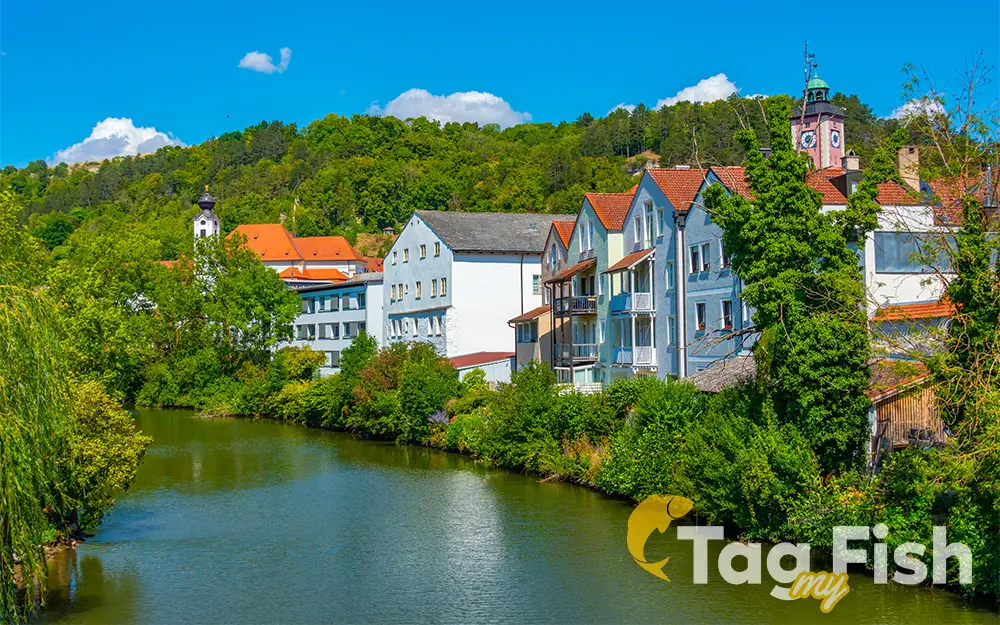Altmuhl River

General data
- Name: Altmuhl River
- Water system: Danube
- Water type: River
- Progression: Danube -> Black sea -> Mediterranean Sea -> Atlantic Ocean -> Planet Earth
- Climates: Continental
- Continents: Europe
- Countries: Germany
The Altmühl is a river in Bavaria, Germany. It is a left tributary of the river Danube and is approximately 230 kilometres (140 mi) long. The source of the Altmühl is close to the town of Ansbach. From here the river runs southeastwards as a narrow brook to enter the Altmühlsee (a lake) north of Gunzenhausen. After leaving Gunzenhausen, the river moves in a broad curve through the Franconian Jura. It enters the Naturpark Altmühltal (Altmühl Valley Nature Park), which is known for its natural environment: The meanders of the Altmühl river have cut deep gorges into the mountains of the Franconian Jura. Downstream of Dietfurt, the riverbed was straightened and integrated into a canal connecting the river Main and the river Danube (the Rhine–Main–Danube Canal). In spite of protests by conservationists, the canal was opened in 1992 and has changed much of the eastern Altmühl valley.[3] The Altmühl finally flows into the Danube in Kelheim.

 English
English
 Spanish
Spanish
 German
German
 French
French
 Serbian
Serbian
 Russian
Russian

